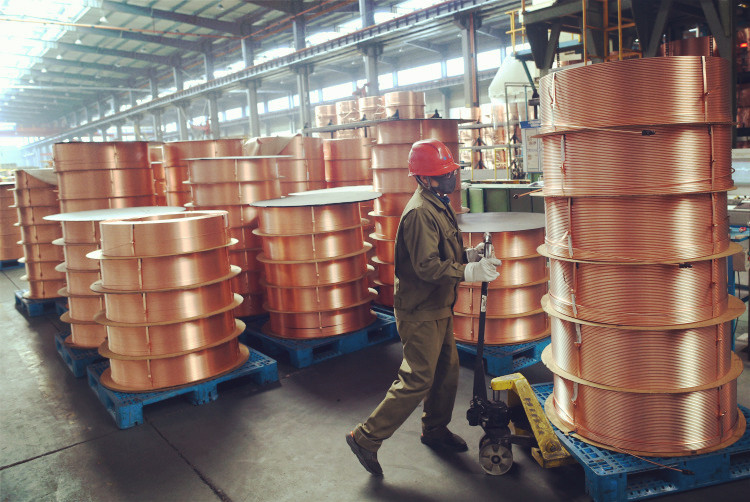

Excerpt from Magazine Zhejiang Businessman:
China's Factories in the Global Anti-epidemic Industrial Chain Deciphering Basic Strength and Confidence of Zhejiang after Resumption of Work and Production
No country in the world can do this like China with regard to epidemic prevention and control; no other country in the world can do the same with respect to helping companies resume work and production. The impact of the outbreak on supply chain and industrial chain is short-term, and China's important position in global supply chain and industrial chain will not be changed by it.
"In February, we were worried about whether our orders would be transferred to Southeast Asia. By March, that concern had been gradually eased," said Qian Ziqiang, Board Secretary of Hailiang.
In terms of both the production and sales volume of copper tubes, Hailiang ranks first in the world. The global copper-processing giant's production capacity quickly recovered during the outbreak, but even so, Hailiang were briefly mired in concern before March that orders could be transferred.
"This worry didn't actually happen, because domestic capacity recovery capacity exceeded the expectations of overseas customers," Qian told reporters from Zhejiang Businessman. Clearly, even in case of short-term "shock", once China's supply chain is repaired, foreign customers can quickly turn around with the advantages of huge supply chain, mature and efficient industrial workers, low cost and so on.
Worry Dissipated as a Result of Globalization
"Why is China's supply chain so stable around the world?" -- "Overseas customers come to China to buy all the products they need and then find a ship to pull them away." This is the biggest overall advantage of China's production capacity. Yet novel coronavirus pneumonia, while destroying the body's immune system, also tried to "shake" the overall advantage of China's supply chain.
During the Spring Festival, Hailiang's Shanghai production base did not stop production due to full orders. The decision avoided Hailiang’s losses to the greatest extent during the outbreak. Zhejiang and Shanghai are the main production bases of Hailiang’s export products. Zhejiang began to gradually restore production capacity on February 13 and Shanghai has never stopped production lines, so the outbreak had relatively less obvious impact on Hailiang.
At this time, Hailiang’s global layout is just right for it to cushion the pressure of production capacity.
Hailiang has 15 production bases in the world, including Zhejiang, Shanghai, Anhui, Guangdong Taishan, Guangdong Zhongshan, Chongqing, Chengdu, and also Vietnam, Thailand, the United States, Germany Berlin, Germany Menden, France, Italy and Spain, and its business covers 124 countries and regions.
Its production base covers almost all of the world's major consumer markets. Wherein, Southeast Asia production base overlaps domestic production capacity. Once domestic production capacity can not keep up with, Vietnam, Thailand can quickly replenish. In the past two months, Thailand and Vietnam added more than 1,000 tons a month in their production bases, and their monthly output hit record high.

The core raw materials of copper processing products are bulk commodity electrolytic copper and domestic metallurgical plants have priority to resume work, so Hailiang did not encounter obstacles in the procurement of raw materials. Compared with the same period in previous years, its export orders even increased, because some of the domestic small and medium-sized peer enterprises have not restored production capacity in time.
Hailiang's production bases intensively cover the world's major consumer markets, and Hailiang has the largest layout in China, the world's largest consumer market. This scale of globalization has brought obvious advantages to the production capacity, technology and cost of Hailiang.
Complete industrial chain and high-efficient technical workers are the key to forming cost advantages. At present, it is almost impossible to find ideal regions abroad that can achieve the same scale of production capacity to replace China.

